Andrew Sarris was an American film critic. He was a leading proponent of the auteur theory of film criticism.

The Docks of New York is a 1928 American silent drama film directed by Josef von Sternberg and starring George Bancroft, Betty Compson, and Olga Baclanova. The movie was adapted by Jules Furthman from the John Monk Saunders story The Dock Walloper.
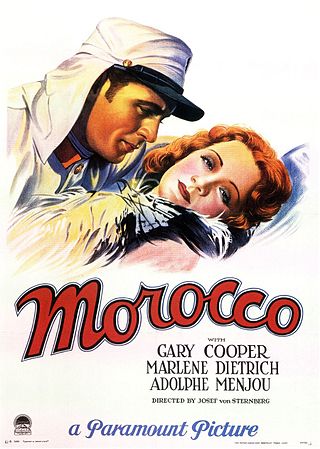
Morocco is a 1930 American pre-Code romantic drama film directed by Josef von Sternberg and starring Gary Cooper, Marlene Dietrich, and Adolphe Menjou. Based on the 1927 novel Amy Jolly by Benno Vigny and adapted by Jules Furthman, the film is about a cabaret singer and a Legionnaire who fall in love during the Rif War, and whose relationship is complicated by his womanizing and the appearance of a rich man who is also in love with her. The film is famous for a scene in which Dietrich performs a song dressed in a man's tailcoat and kisses another woman, both of which were considered scandalous for the period.

Thunderbolt is a 1929 American pre-Code proto-noir film directed by Josef von Sternberg and starring George Bancroft, Fay Wray, Richard Arlen, Tully Marshall and Eugenie Besserer. It tells the story of a criminal, facing execution, who wants to kill the man in the next cell for being in love with his former girlfriend.

Wallace Fitzgerald Beery was an American film and stage actor. He is best known for his portrayal of Bill in Min and Bill (1930) opposite Marie Dressler, as General Director Preysing in Grand Hotel (1932), as Long John Silver in Treasure Island (1934), as Pancho Villa in Viva Villa! (1934), and his title role in The Champ (1931), for which he won the Academy Award for Best Actor. Beery appeared in some 250 films during a 36-year career. His contract with Metro-Goldwyn-Mayer stipulated in 1932 that he would be paid $1 more than any other contract player at the studio. This made Beery the highest-paid film actor in the world during the early 1930s. He was the brother of actor Noah Beery and uncle of actor Noah Beery Jr.
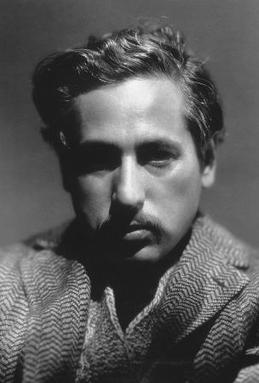
Josef von Sternberg was an Austrian-born filmmaker whose career successfully spanned the transition from the silent to the sound era, during which he worked with most of the major Hollywood studios. He is best known for his film collaboration with actress Marlene Dietrich in the 1930s, including the highly regarded Paramount/UFA production, The Blue Angel (1930).

The Last Command is a 1928 silent romantic drama film directed by Josef von Sternberg, and written by John F. Goodrich and Herman J. Mankiewicz from a story by Lajos Bíró. The film stars Emil Jannings, who won the first Academy Award for Best Actor in a Leading Role at the 1929 ceremony for his performances in this film and The Way of All Flesh, the only year multiple roles were considered. Evelyn Brent and William Powell co-star.
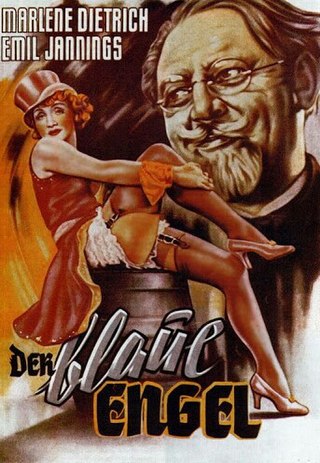
The Blue Angel is a 1930 German musical comedy-drama film directed by Josef von Sternberg and starring Marlene Dietrich, Emil Jannings and Kurt Gerron. Written by Carl Zuckmayer, Karl Vollmöller and Robert Liebmann, with uncredited contributions by Sternberg, it is based on Heinrich Mann's 1905 novel Professor Unrat and set in an unspecified northern German port city. The Blue Angel presents the tragic transformation of a respectable professor into a cabaret clown and his descent into madness. The film was the first feature-length German sound film and brought Dietrich international fame. It also introduced her signature song, Friedrich Hollaender and Robert Liebmann's "Falling in Love Again ". The film is considered a classic of German cinema.
Underworld is a 1927 American silent crime film directed by Josef von Sternberg and starring Clive Brook, Evelyn Brent and George Bancroft. The film launched Sternberg's eight-year collaboration with Paramount Pictures, with whom he would produce his seven films with actress Marlene Dietrich. Journalist and screenwriter Ben Hecht won an Academy Award for Best Original Story.

Macao is a 1952 American adventure film noir directed by Josef von Sternberg and Nicholas Ray and starring Robert Mitchum, Jane Russell, William Bendix, and Gloria Grahame. Shot in black-and-white, it was distributed by RKO Pictures.
A Woman of the Sea, also known by its working title Sea Gulls, is an unreleased silent film produced in 1926 by the Chaplin Film Company. It is one of only two lost Charlie Chaplin films, having been destroyed by Chaplin himself as a tax writeoff.
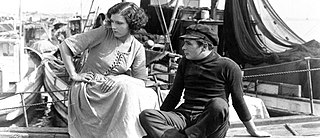
The Salvation Hunters is a 1925 American silent drama film which marked the directorial debut of the 30-year old Josef von Sternberg. The feature stars Georgia Hale and George K. Arthur, and would bring Sternberg, "a new talent", to the attention of the major movie studios, including Metro-Goldwyn-Mayer and Paramount Pictures. Film Mercury included The Salvation Hunters in its ten-best list for the films of 1925.

The Devil Is a Woman is a 1935 American romance film directed and photographed by Josef von Sternberg, adapted from the 1898 novel La Femme et le pantin by Pierre Louÿs. The film was based on a screenplay by John Dos Passos, and stars Marlene Dietrich, Lionel Atwill, Cesar Romero, Edward Everett Horton, and Alison Skipworth. The movie is the last of the six Sternberg-Dietrich collaborations for Paramount Pictures.
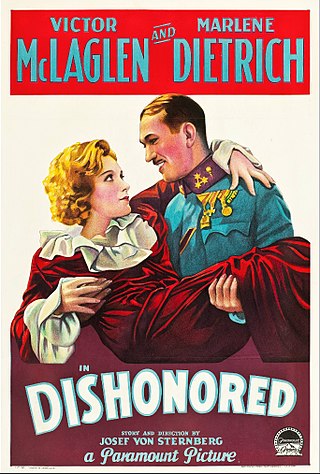
Dishonored is a 1931 American pre-Code romantic spy film directed and edited by Josef von Sternberg, who also co-wrote the film with Daniel N. Rubin. It was produced and distributed by Paramount Pictures. The film stars Marlene Dietrich, Victor McLaglen, Gustav von Seyffertitz, and Warner Oland, and follows a female spy (Dietrich) for Austria-Hungary during World War I. Costume design was provided by Travis Banton, in one of his several collaborations with Dietrich.
The Town is a short propaganda film produced by the Office of War Information in 1943. The documentary, depicting the American Midwestern city of Madison, Indiana was filmed by Josef von Sternberg in 1943 and released in 1945.
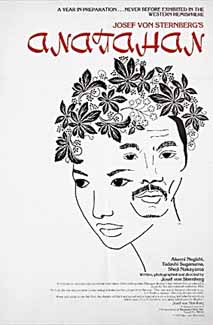
Anatahan (アナタハン), also known as The Saga of Anatahan, is a 1953 black-and-white Japanese film war drama directed by Josef von Sternberg, with special effects by Eiji Tsuburaya. The World War II Japanese holdouts on Anatahan, then part of the South Seas Mandate of Imperial Japan, now one of the Northern Mariana Islands of the United States, also inspired a 1998 novel, Cage on the Sea.
Crime and Punishment is a 1935 American drama film directed by Josef von Sternberg for Columbia Pictures. The screenplay was adapted by Joseph Anthony and S.K. Lauren from Fyodor Dostoevsky's 1866 novel of the same title. The film stars Peter Lorre in the lead role of Raskolnikov.

The Exquisite Sinner is a 1926 American silent drama film directed by Josef von Sternberg and adapted by Alice Duer Miller from the novel Escape by Alden Brooks. Starring Conrad Nagel and Renée Adorée, the Metro-Goldwyn-Mayer (MGM) never given a general release. No known print of the film has been recovered to date. Later that same year a second feature film Heaven on Earth, directed by Phil Rosen was released with the same cast and same sets, but a different screenplay. Rosen's version performed poorly at the box office. Sternberg reported, "the result was two ineffective films instead of one.” The American Film Institute Catalog Feature Films: 1921-30 by The American Film Institute.

The Drag Net, also known as The Dragnet, is a 1928 American silent crime drama produced by Famous Players–Lasky and distributed by Paramount Pictures based on the story "Nightstick" by Oliver H.P. Garrett. It was directed by Josef von Sternberg from an original screen story and starring George Bancroft and Evelyn Brent.

An American Tragedy (1931) is an American pre-Code drama film directed by Josef von Sternberg. It was produced and distributed by Paramount Pictures. The film is based on Theodore Dreiser's 1925 novel An American Tragedy and the 1926 play adaptation. These were based on the historic 1906 murder of Grace Brown by Chester Gillette at Big Moose Lake in upstate New York.















